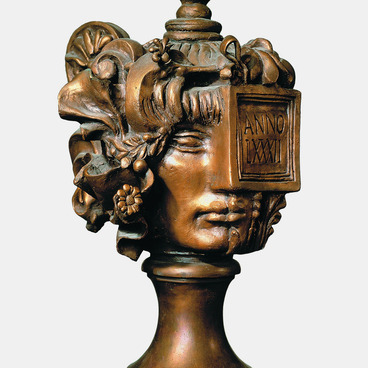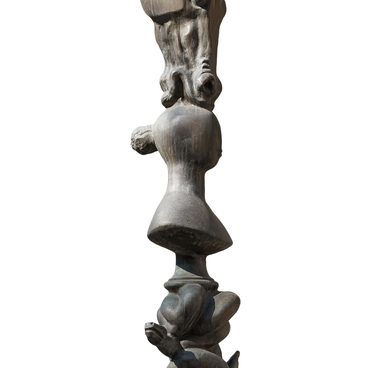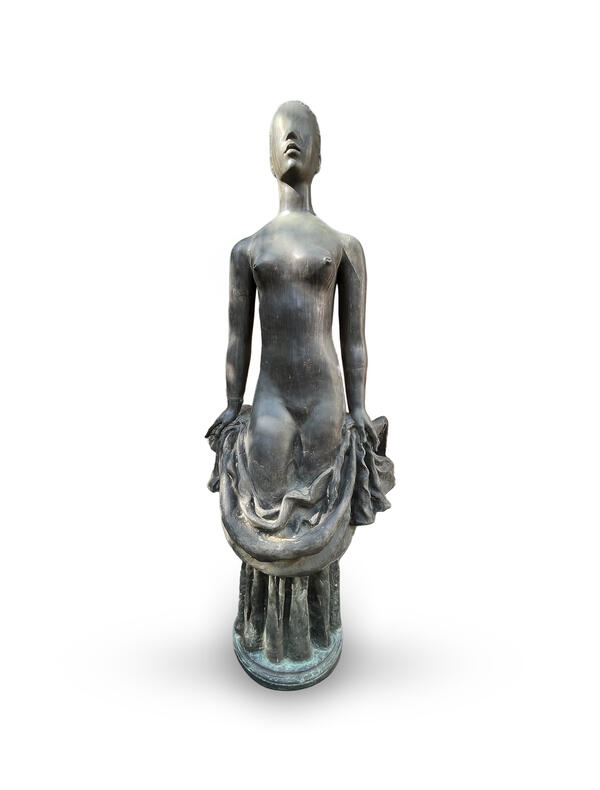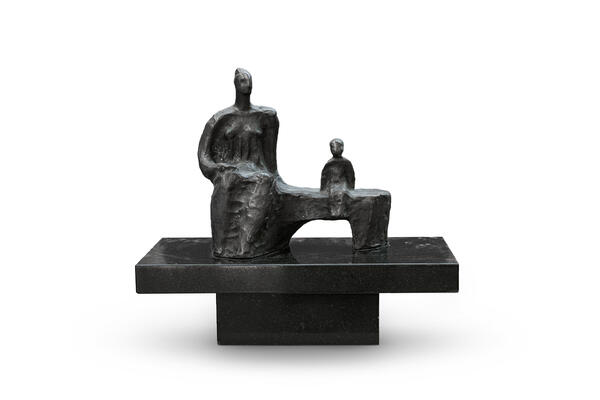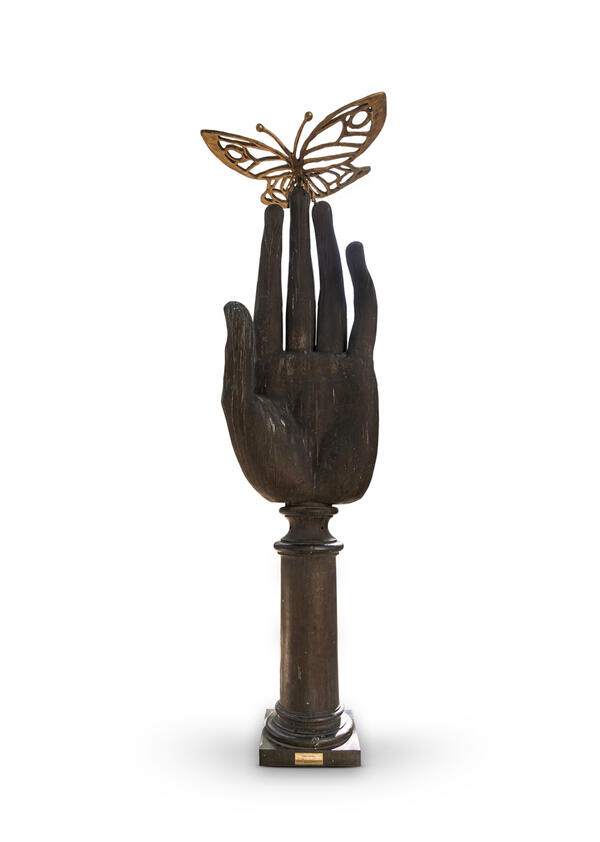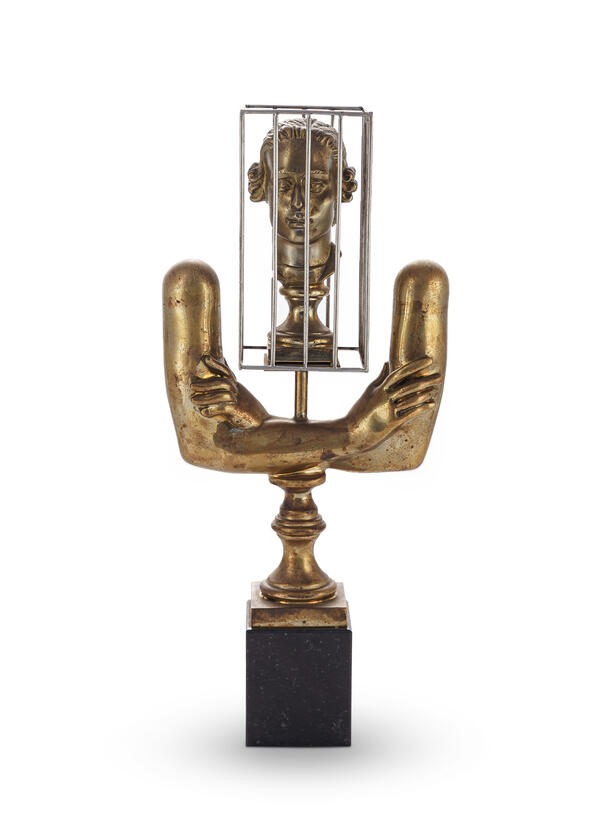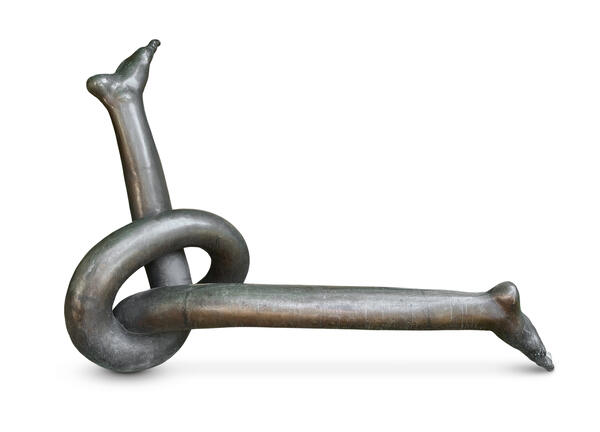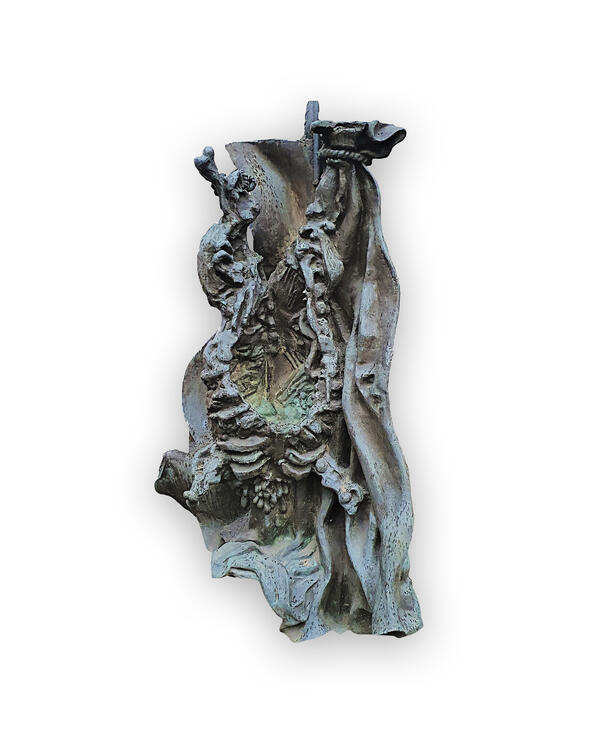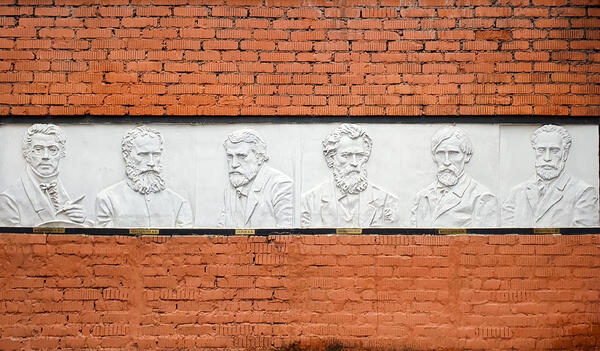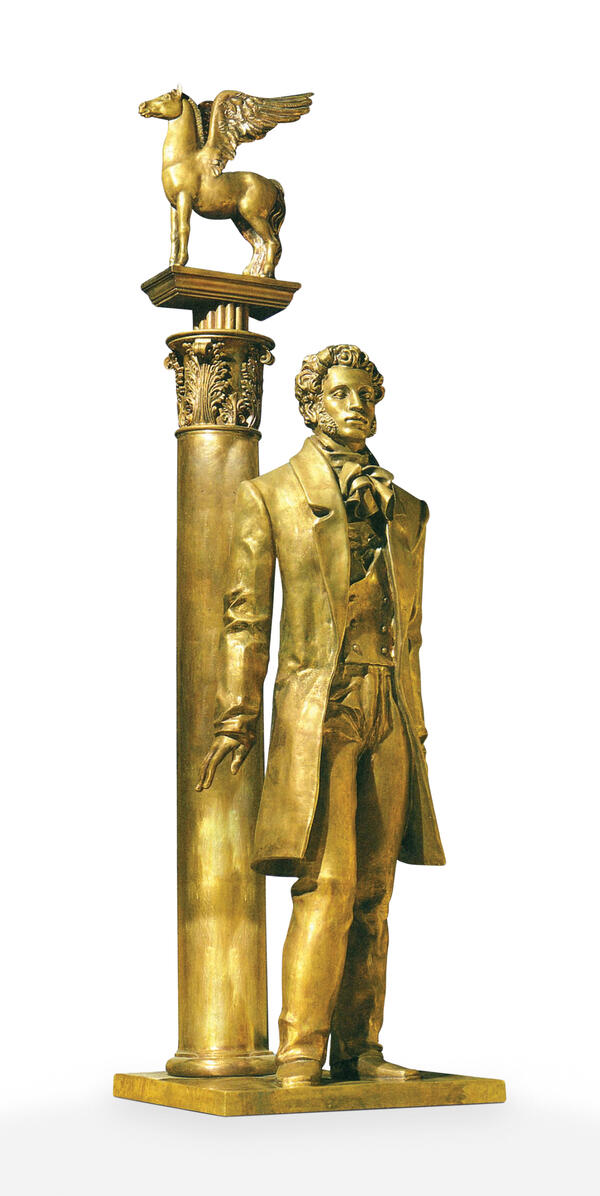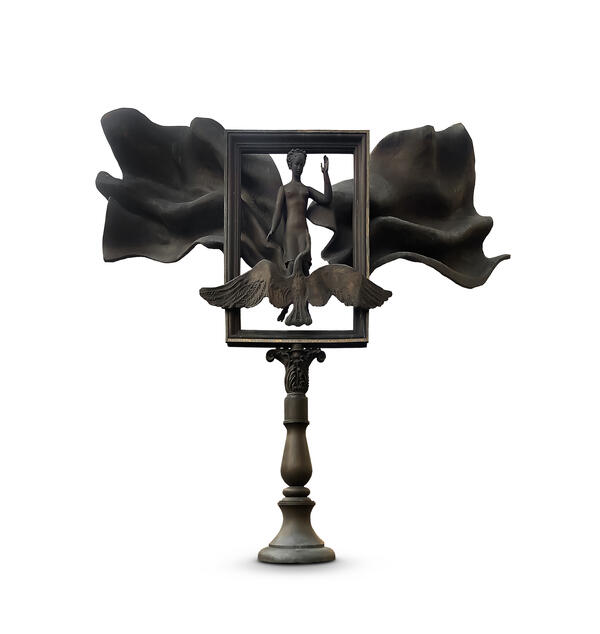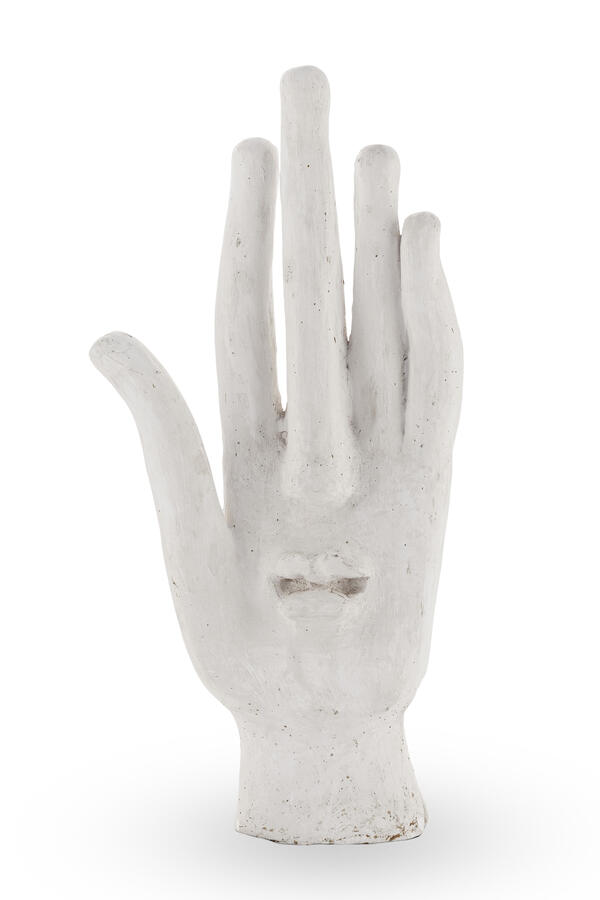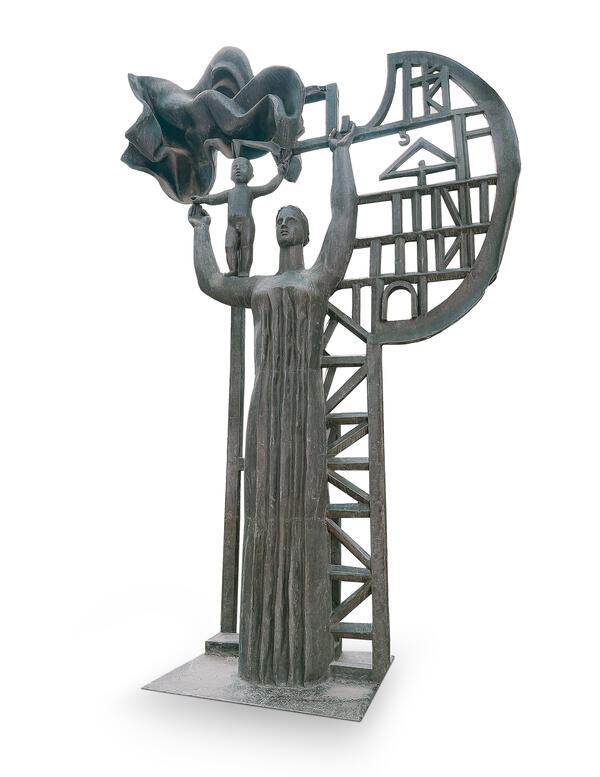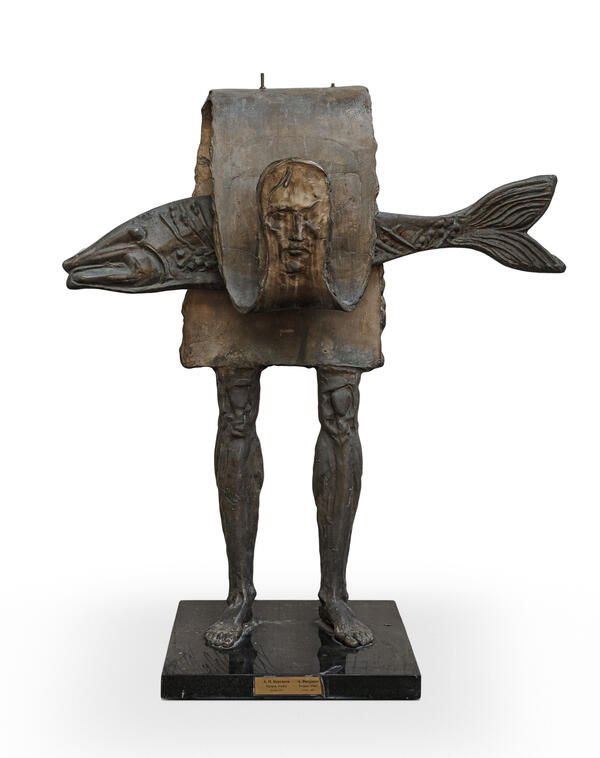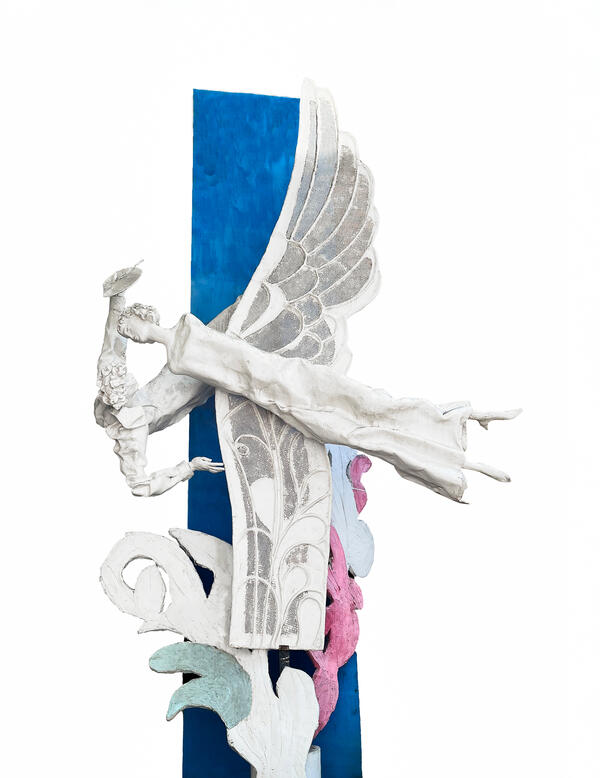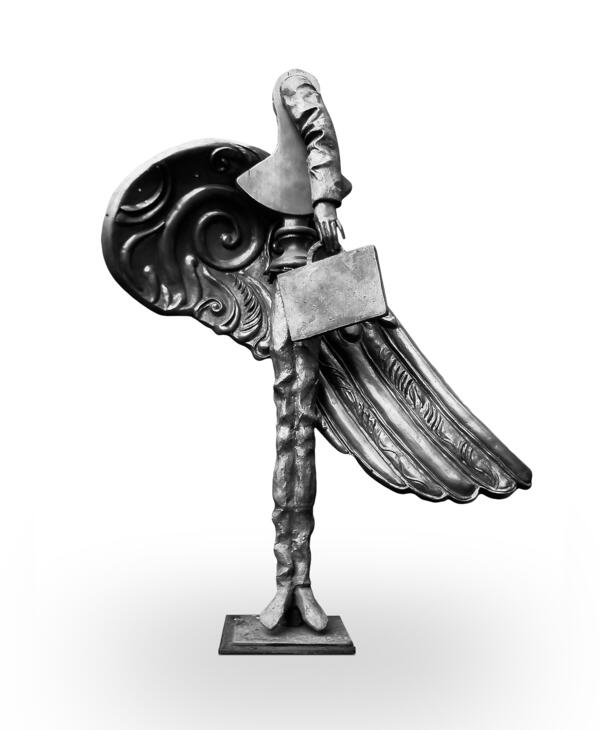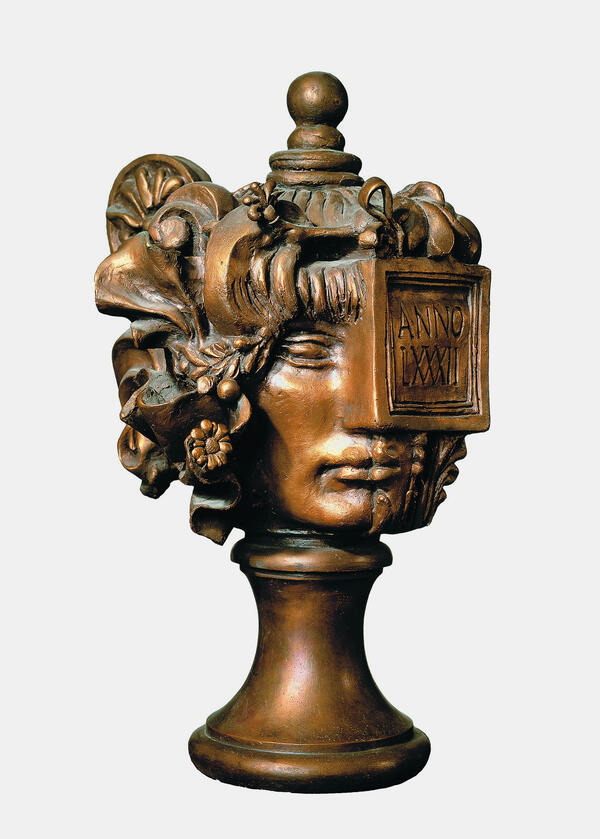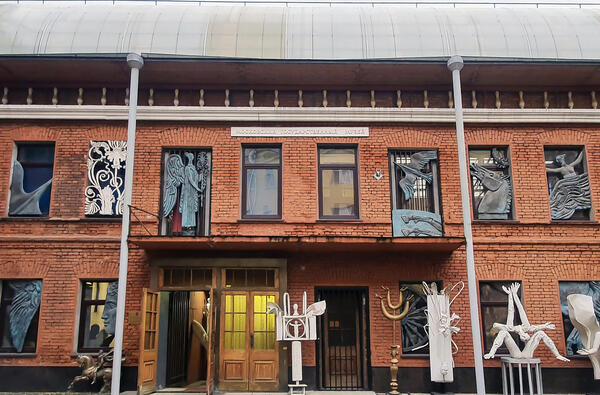The museum’s main exhibition area is the Pegasus Gallery — an old residential building that was restored from ruin based on the design by the sculptor Alexander Nikolayevich Burganov. Its façade features an architectural environment for displaying sculptures.
Alexander Burganov explained his idea for the placement of sculptures in the museum’s main façade, “We call it the grand arcade or the iconostasis. It brings together statues symbolizing strength and power, life and death, youth and sorrow, indifference and joy. The large figures are installed in accordance with the general artistic idea and accentuate the building’s architecture. The composition is crowned by a sculpture titled ‘Birth of Man’.“
This is a large white figure of an angel. It towers over the museum’s Grand Courtyard with its white wings spread out. The composition is fragmented. There are the large white wings, light draperies, an elegant white head, and space enclosed in a frame instead of the body. All these elements merge together to create the impression of an incorporeality, lightness, and a divine being that can only be felt, not seen.
In the center frame of the composition, there is a figure of a young boy. Unlike the angel, with its missing pieces, the boy is quite tangible and lifelike. This is a healthy and strong boy, standing firmly on his feet with his arms outstretched in a welcoming gesture. The boy’s figure represents the joy of existence, as he is open to the new world and ready to embrace it. The frame in the center of the angel’s figure serves as a window to life which the boy expects to be kind and fair. This work serves as a hymn to life, creation, and goodness, celebrating the triumph over death, evil, and destruction.
The sculpture “Birth of Man” from the “Big Angel” arcade was designed by
Alexander Burganov. It was made to complement the composition of the Pegasus
Gallery’s façade. It is the artist’s copy of an original bronze sculpture that
was presented at a personal exhibition at the Mont des Arts in Brussels in
2004.

